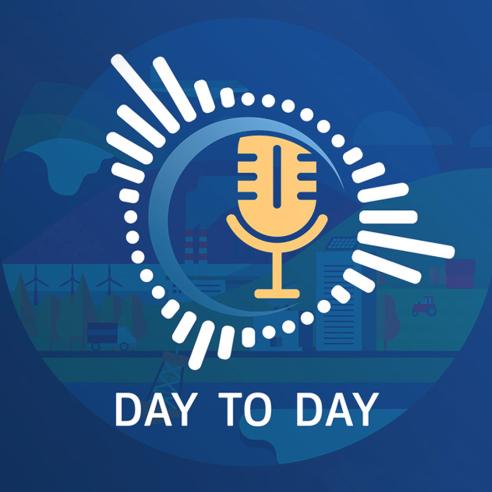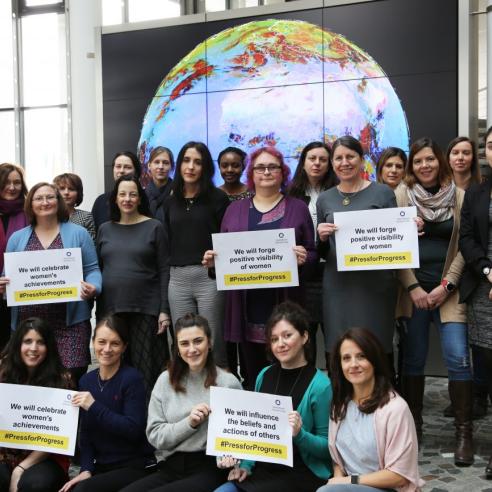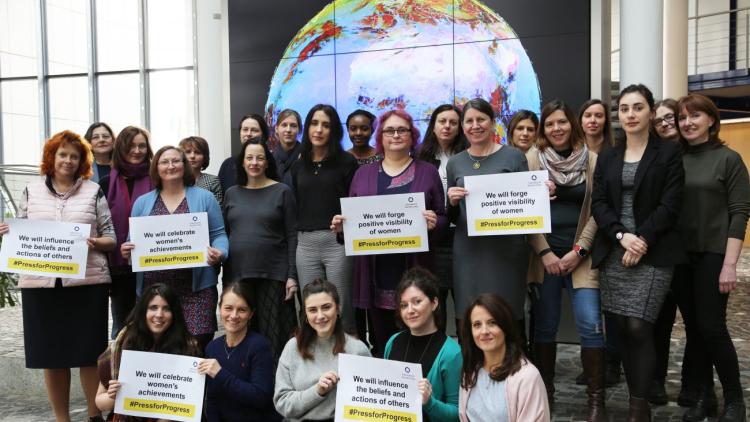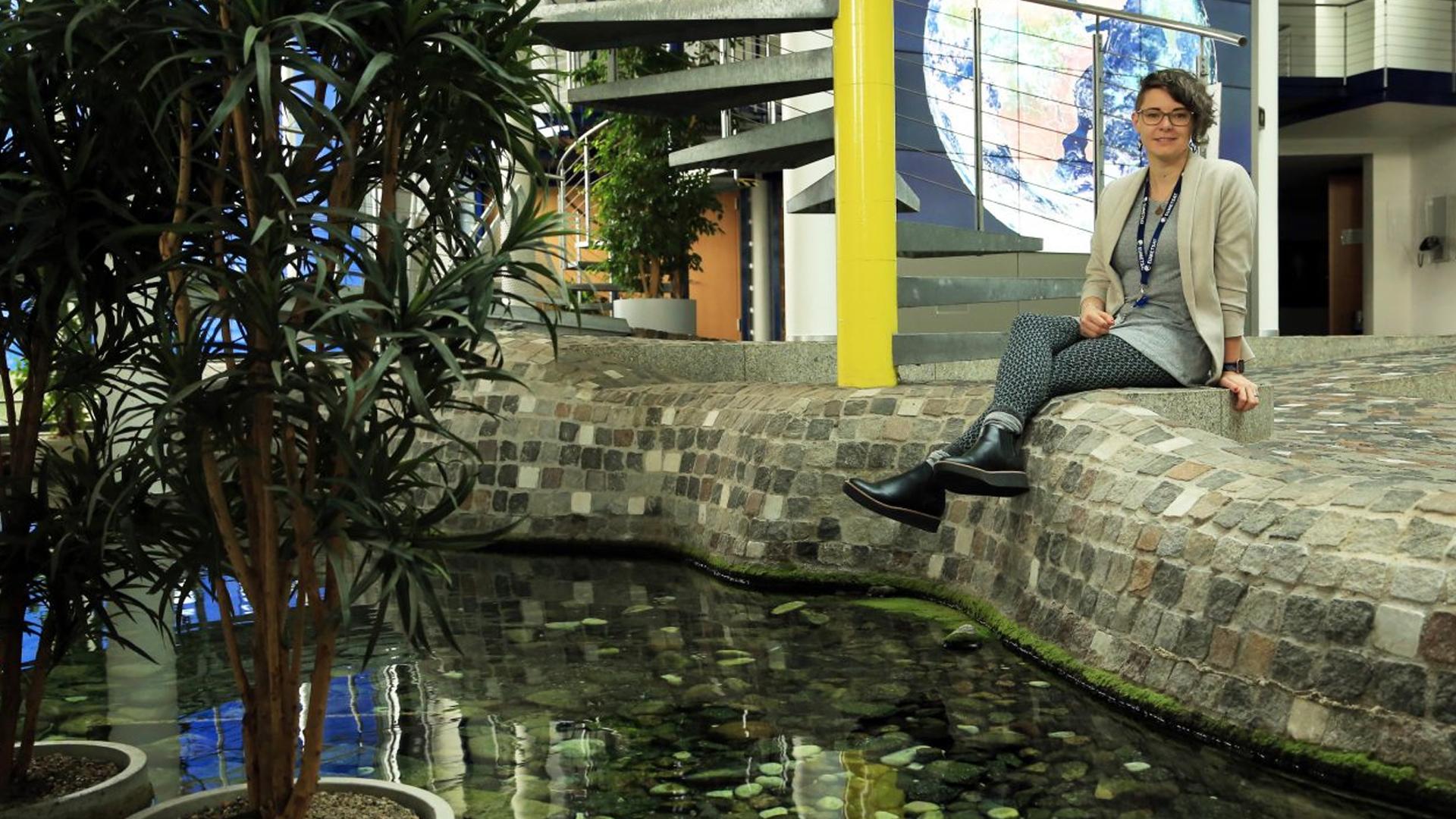
Celebrating International Women’s Day with a special Inside EUMETSAT edition!
To coincide with this year’s International Women’s Day (IWD) on 8 March, our Inside EUMETSAT episode will be a little different this time.

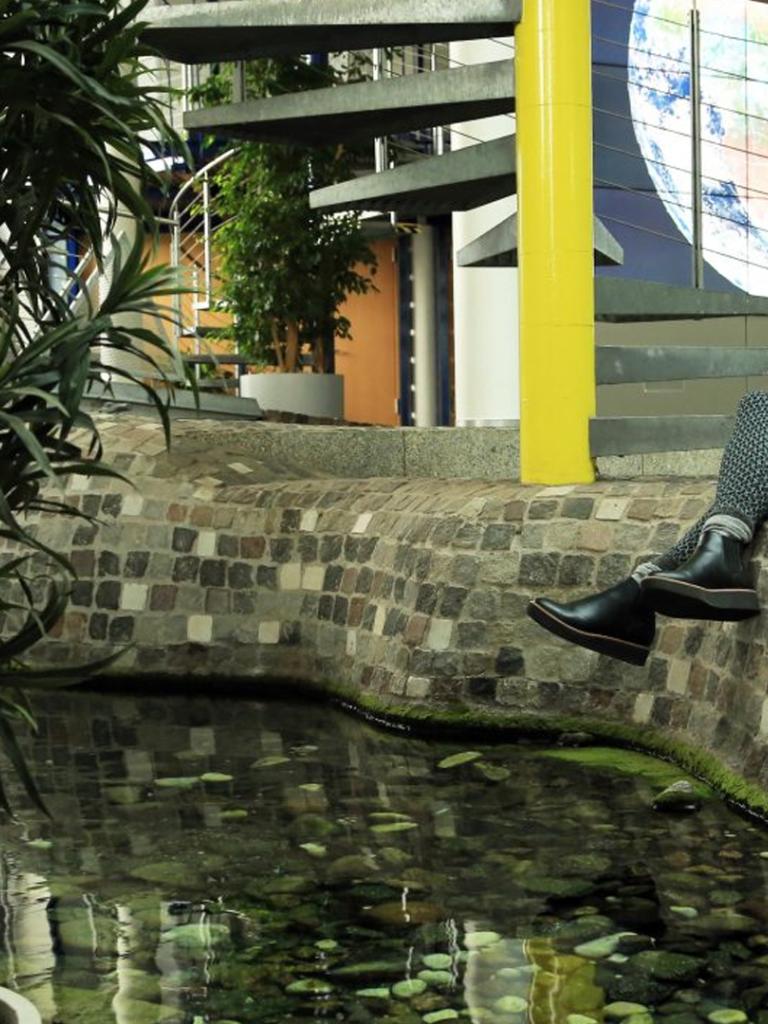
Hayley Evers-King, resident Marine Applications Expert at EUMETSAT, sat down with us to discuss both her interesting role and this year’s theme: #EachforEqual.
15 March 2021
28 April 2020
We’re proud to celebrate this special occasion each year in order to acknowledge the fantastic and inspiring women we have working for us at EUMETSAT and within our partner organisations around the world. A gender balanced and inclusive working environment is the best environment!
Introducing Hayley, just one of the many amazing women we have working here:

Can you tell us about your role?
My role acts as a link between us here at EUMETSAT operating satellites and the people outside who are using the satellite data for marine applications.
I work with a specific set of satellites, those that are part of the Copernicus programme (so mostly Sentinel-3). I’m kind of a go-between. I work to understand how users feel about data and how they use it. I then use this feedback internally so that we can improve things and vice versa – I communicate what we are doing inside the building out to users in various ways.
My role involves a really broad range of activities. It can be anything; from writing a case study about interesting images so that people know what we do and why it’s important, to working on technical documentations like handbooks for using certain data files. I also reply to questions that come in via the support help desk and help people figure out how they can actually work with the data, because sometimes the users might not have used any satellite data before but have heard about it and think it could be helpful.
The role can be quite creative and I really enjoy that part of the process: the training courses, the hackathons; I love that kind of thing.
How does your role differentiate to the other trainers?
I am a bit of an odd ball in the User Support and Climate Services (USC) division. There is Federico Fierli (Atmospheric Composition Training Officer) and myself, who are both topic experts: he’s an expert in atmospheric composition and I’m an expert in marine science.
He sits on the training side and I sit in the user-support side but we each have something to do with both sides. It makes sense that in marine and atmospheric composition the roles are a bit more flexible because what we do in terms of user support and engagement often requires training.
I don’t provide the marine training by myself, we have a contract with the Plymouth Marine Laboratory (PML) who I used to work for, that is still ongoing. They do most of the training in person and I am more involved with the development of how we do training – coming up with new tools and ideas for collaborating.
So, rather than just delivering courses we say, “OK, we have an interest from marine consultancies who work in the commercial sphere and we need to design a course for them that includes this kind of thing”. Then I’d work with the trainers to develop it.
What was your role at PML and how was the transition into your current EUMETSAT role? Are there many differences?
I come from a traditional academic background. I did a PhD developing methods for taking the signals we get from the satellites to gathering information about the oceans, particularly looking at coastal algal blooms and how they impact aquaculture. Because of the work I did with the satellite data, I always had an interest in the operational aspects of it, for example: how do you do this routinely? How do you use this in an application? Down-stream decision-making, rather than just research.
The Earth observation satellite-data field naturally lends itself to very practical applications. After my PhD I moved to PML, which as an institution has that balance of research and operational activities, so I was still developing things like algorithms and testing/applying the data to different science questions about the sea.
However, I steadily gathered more and more of a role in getting satellite data to work for people in a larger context and I got involved in different contracts that had that support angle – which is sort of how I got in touch with EUMETSAT.
I first got involved with the Oceans from Space MOOC. At the time, I met Mark Higgins (Training Manager at EUMETSAT) at a conference and he said: “Oh you’re interested in ocean stuff, you should talk to us about our MOOC”. So, I got in touch with him and other people working on the project and was invited to visit. I was here around the time Sentinel-3 was becoming operational, so the marine side was growing in the building and I became a regular person to talk to about how marine data was being used.
So you’ve always been involved with aquaculture in some way?
Yes, it was always marine but mostly research as opposed to how satellites worked and how the data gets distributed. My previous work was more a case of “can we use satellite data to measure carbon in the ocean?” or “what does satellite data tell us about heat fluxes in the ocean?” or “can we use satellite data to validate climate models?”… Answering any questions that have a research angle.
I did a bit of translation of research into operational activities at PML, for example, we worked on a lot of projects supporting the aquaculture. We were routinely checking satellite data, creating maps and risk indexes that were communicated out to people working in that industry, across the whole value-chain.
I admire that process and facilitating it for lots of other people and sectors, so hence my enthusiasm in taking the role here.
Can you talk a bit about the user community and their engagement?
The marine satellite data user community is broad, so my role involves interacting with stakeholders in a variety of different environments. In particular we are working with the international communities that use satellite data, such as the International Ocean-Colour Coordinating Group (IOCCG), the Group for High Resolution Sea Surface Temperature (GHRSST) or Ocean Surface Topography Science Team (OSTST). Going to things like conferences is a great way to see for yourself how people are finding the data and if there are things missing, things we could improve on or new products that are needed. The same with training events. It can be really intense, trying to solve challenges that users face working with data, in a classroom environment, but you really learn a lot about what users really need, how they understand the data and work with it.
I try to manage the feedback and get it to the right people in the building. It’s a huge building and everybody involved works really hard on lots of different aspects, so gathering the feedback and knowing who to give it to is important.
I’m constantly keeping an ear out as to what are our users’ needs are. It’s a bit weird as it’s actually closest to my first jobs: working in supermarkets and restaurants which are very customer-service focused roles.
I’ve kind of come back to that in a way and I actually like it. It’s nice to be able to help people, solve problems, and make them happy.
What events have you been involved in recently? And what’s coming up?
I helped prepare challenges and tools for a hackathon last November in Tallinn which focused on using marine data to create solutions to problems currently affecting the Baltic Sea.
We also had quite a few interesting training events during the latter part of 2019. I worked on an ocean training course with the European Space Agency (ESA) as both our organisations operate satellites that deliver marine data, so working together and with support from experts across the scientific community we can provide advanced training courses where data can be brought together in synthesis.
We also ran a training course with our African partners working on the Global Monitoring for Environment and Security and Africa (GMES Africa) programme, where the African Union is working with the European Commission Copernicus programme to implement regional services using satellite data.
I also paid a visit to the European Commission (EC) recently to talk about how we are doing with Copernicus user engagement in general.
The beginning of 2020 is quite quiet, but we’re planning some online courses and other events around the European Geosciences Union (EGU) and other conferences happening this year.
What does a typical day look like to you?
It’s very broad. I probably spend a lot less time at my desk now than I used to. I used to code a lot and keep my head in numbers, which I still get to do and enjoy, but I also spend much more of my time talking to other people in different parts of the building to discuss how we are working to improve all the different parts of the programmes we work on.
Today, for instance, I came in, finished drafting a case study on marine heatwaves, and sent that off to somebody in the UK for input. I then went to catch up with my manager about how things are going and talk about upcoming missions, then I went to the upcoming product-development meeting where we discuss the evolution of products and what we need to make users aware of.
Then, I went into the Operational division’s board meeting for Sentinel-3 and learnt about what they are doing with manoeuvres for the satellite. Again, we collaborate with ESA on all of this and it’s important for me to understand who has what responsibilities. Finally, I sent loads of emails about upcoming training courses.
It’s a very diverse job and I’m never bored, there’s sometimes too much to do but I enjoy that. I like to be busy and to figure out how to solve some of the complex problems that we face; it takes a real team to operate the satellites and get the data down to the users.
What are the things you enjoy most about the role and what challenges have you faced so far?
I really like the international element of working here. Meeting people from so many different backgrounds is very cool and also interdisciplinary. We have engineers, international relations and communications experts, programmers etc.
It makes the job really fun because everyone you talk to has something that you can either learn from or hear about so it’s interesting in every way, shape and form. I really like that. The challenges? Learning all of the different acronyms!
I thought I had a pretty good handle on ocean remote-sensing acronyms and then I came here and there’s acronyms for absolutely everything. I’m learning to speak a slightly different language.
I am also used to a research environment so learning how the landscape works with regards to what our mission requirements are and what our mandate is, plus how we work with other organisations is a challenge but I’m also finding that interesting.
As you’ve recently moved from the UK, what do you like so far about living in Germany?
I’m really enjoying it. It’s very funny because it’s the first time I’ve lived away from the sea in my entire life but I don’t miss it yet. I don’t even really notice… I guess I spend all day staring at it through the computer through our data!
I like Darmstadt in particular because it’s very close to Frankfurt so it’s really international and there’s lots of things going on culturally – I’ve got a long list of music gigs that I want to go to. There’s also lots of different types of restaurants here. Darmstadt in itself is actually very quiet so where we live you can have a relaxing time and go to the forest, but still be close to lots of events.
I’m enjoying the challenges of trying to figure out learning a new language. That’s not a privilege that many English people often get. It’s still difficult to get immersed in the language because everybody speaks really good English here so you’re not really forced into it, but I’m trying to get myself out to learn.
The public transport is great, so if you have the environment in mind it’s quite easy to make good choices around here. It’s the first time in my life that I don’t own a car and I don’t feel the need to have one. Also recycling is really good here in Germany: people recycle very well and they take it seriously.
Lastly, there are lots of fresh fruit and vegetables locally, so I try to eat more vegan food and I cycle every day which is good exercise.
What do you like to do in your spare time?
I really enjoy cooking and I can go home and happily cook for seven hours, trying different things. I did a whole six-course tasting menu for my best friend’s birthday this weekend for example, and made banana bread late last night.
Pretty much anything involving food and wine – I enjoy wine tasting which is great as living here, there’s a nice wine region.
Do you have any advice to offer those that might want to follow the same path as you?
I’ve given a few career talks in the last couple of years as I’ve gotten into a more mature stage of my career beyond post-PhD.
It’s such a rapidly-evolving field and I didn’t plan to end up here, I just followed what I was interested in. I had an interest in Earth system sciences in general, a bit in meteorology and eventually in oceanography because of the large implications of working with something that is physically such a dominant part of the planet.
I think one of the most important things is to have some kind of scientific background that is quantitative and interdisciplinary; how you connect biological, physical, chemical, mathematical parts and having that skill that allows you to work with data. Data is now the currency of the entire world in many different ways but especially in this type of science.
If you’ve got a skill set that relates to numbers or computer programming, there’s lots of different ways you can enter this field. You can work as an engineer or on the physics/maths side. Any of these types of sciences can bring you into these roles but you definitely need to understand how to work with data and numbers.
On the flip side, if you can marry that with good communication skills, that is really valuable. I’ve got quite a good technical background but I’m not a genius mathematician or anything, however I’ve got enough understanding for that and a passion for communicating so you can bridge a lot of gaps that way. If you can bridge those gaps then there is always going to be a role for you.

Do you feel part of an inclusive workplace at EUMETSAT and in your team? Is it an environment that encourages you to thrive?
In my work at EUMETSAT I’m very lucky to be surrounded by many incredible and inspirational women, and by many men and women from a range of backgrounds who recognise the challenges faced as a result of inequalities in our society, and particularly in the fields that we work in (space, science, tech etc). For me, this is very encouraging. It can be difficult to balance the expectations society has of you as a woman, with the desire and passion you may have for your career.
Really, a more inclusive workplace should be beneficial for everyone, no matter how they choose to balance their life and career. The issues around this can be complex, and engrained in practices not just here but the world over, so it’s really vital we have those supportive networks to allow us all to thrive.
One of the quotes from the IWD website says: “Equality is not a woman’s issue, it’s a business issue.” What steps in your opinion can be taken by organisations to accelerate women’s equality, particularly in the field of science (one that is considered to be underrepresented by females)?
There’s been a lot of research that shows that diverse organisations (not even just relating to gender) are more productive and resilient, though of course the moral case for ensuring equal opportunities is really important too! For me, I think the best approaches organisations can take are to critically analyse the current situation and to consider where any inequalities are being perpetuated and people may not have realised.
Many business practices – hiring, health care provision, promotion, working hours, transport/facilities – can have gendered elements that can be overlooked by accident. A critical thing is to give a diversity of people the opportunity to raise issues that affect them and include those perspectives when decisions are made. I think organisations can also take a role in the wider systems that influence who works for them eventually, i.e., by supporting school and university level outreach. We’re doing a lot of great work towards that at EUMETSAT and it’s great!
You’re a big advocate for women in science and regularly use your social media to celebrate women’s achievements. How do you think scientific organisations can use social media to do the same and take action for a more gender equal world?
Social media is a great way to share the successes of women in science and related disciplines. Organisations can do this and raise the profile of the women in their organisations and in others that they work with. This can help change stereotypes, give other women role models, and show women they are valued and recognised for their contributions. I really like when organisations run accounts that are guest hosted, or do things like ‘Ask me anything’ sessions – so you can really hear from and interact with people directly.
Organisations can also speak openly about what they are doing towards equality – I’ve always found it really encouraging to hear about initiatives that have been put in place to address the challenges that people from different underrepresented groups face.
What are some of the best examples you’ve seen during your career of organisations challenging stereotypes, fighting bias and improving situations for women in the workplace?
In my previous workplace I was involved in applying for an Athena Swan charter award (a UK-wide initiative for research organisations). From my experience this is an excellent framework for helping to address issues around inequality, and I learnt a lot of how to question things from perspectives beyond my own. The process involved a lot of work assessing the current status within the organisation (women in different roles, promotion, policies around caring responsibilities, hiring practice, harassment levels etc.), so that areas that needed improvement could be identified and we could quantify meaningful impact. Even just acknowledging the situation as it was, made women in the organisation feel heard, and we really started to make rapid progress. We all undertook unconscious bias testing, and there were regular coffee mornings held on certain topics which helped us identify a range of small and larger things we could try and address to improve situations for women (and often men) in the workplace too.

Thanks a lot to Hayley for taking the time to answer our questions and we’d like to wish everybody a happy International Women’s Day from EUMETSAT!
For more of the Inside EUMETSAT series, head over to our Medium channel. For more information about International Women’s Day and how you can get involved next year, visit the dedicated website here.
